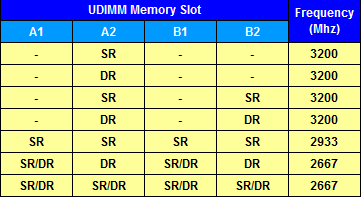Hi there,
My current rig has been built up more than 10 years ago with minor modifications since then.
It’s time to move on, and I’m (hopefully) ready to finally make the leap to VFIO (if only to harden/isolate that awful W10…).
The Goal
Gaming on a Win VM, possibly also on a Linux one (see Caveats).
Either use VMs for applications isolation on the hosts and/or on a Linux VM (see Final Thoughts/Questions).
Available Parts
I don’t have much to go on for a new build, but the one part that this will have to evolve around is this one:
Other notable parts
Caveats
- Money is rather scarce. That’s the main reason I’m keeping the 5900X, seeing how much more pricey parts are for an AM5 build. I might make exceptions if I deem them worth the extra expense, though…
- Host distro: Since I often see it used, it’s probably a good idea to specify that I really don’t fancy Ubuntu (nor its derivatives, of course). I’ve seen guides for Arch and Fedora, but are there more ? Debian and the likes (I’d prefer Devuan, but day-dreaming won’t help me get this done) ?
- Host GPU: I suppose just about any GPU would do ? I have a couple GTX 670s lying around (so one for backup, if need be)…
- Region: Europe. Shops-wise, I’m mostly looking at CaseKing, possibly eBay and, as a very last resort, Amazon (feel free to share any respectable shops you’ve had good experience with).
Parts I Considered
| Mobo | ASRock X570 Taichi Razer Edition | ~357€ | ||
| Mobo | ASRock X570 Taichi | ~316€ | ||
| Mobo | ASRock X570s PG Riptide | ~183€ |
I’ve sticked to ASRock, seeing as it’s often used in VFIO builds.
As I understand it, the main interest of the Razer Edition over the regular Taichi is mostly about the number of M.2 slots… though there’s also Thunderbolt 3 and 2.5Gb LAN, both which I can most certainly live without.
The Riptide is not only interesting because of its price, but also its lack of WiFi, which is a big plus for me (to clarify, lacking it is the plus).
Feel free to weigh in about those… or even others.
| CPU Cooler | Noctua NH-D15 Chromax Black | ~120€ |
Black is the new black !
| Thermal Compound | Prolimatech PK-3 | ~15€ |
I don’t really know what’s what these days when it comes to compounds, as I wrote this one down a couple years ago…
Parts I Have No Clue About
- RAM: I was thinking 64GB, so I could experiment with multiple VMs and such, but I’ll probably start with 32GB, if only because of the cost (unless that’s not much of an issue with DDR4 ?). 2x16GB, then, but I don’t know what timings and speed to focus on… Since I have no plan to o/c, I take it 3200MHz is the only real option ?
The thing I’m somewhat worried about is the table for the Riptide on ASRock’s website (as an example):

Does that mean that 3200MHz won’t work with all slots populated (that would at least validate going for 2x32GB from the get-go) ?! - PSU: I’m partial to Seasonic and modular models, but once again, I’m definitily off the loop there…
- Fans: Current ones are Scythes (6x140mm & 1x120mm), and some are noisy above 30% throttle… I suppose I could replace a bunch.
- SSDs: NVMe… yet another black hole in my hardware-fu. From my understanding, I should be looking at PCIe 4.0 and Type 2280 (though that’s less of a problem).
While speed is always good, I would possibly have it superseded by reliability (I like the idea of having cache to lessen the wear, for instance).
Edit: I’m currently leaning strongly towards MLC with cache.
Final Thoughts/Questions
- I suppose I can also have a Linux distro in a VM, with or without access to the main GPU (possibly with a toggle of sorts, if I choose to play on the Win VM while doing other stuff on the Linux one, and at some point shut down the Win one and game on Linux) ?
- If I’m limited with the number of NVMes I can plug directly, can I use more with some adapter, or would I be better off with “regular” SSDs ?
- On that subject, are NVMes that much faster than SSDs (I understand that having NVMes sitting right on the motherboard can give them some advantages compared to using SATA cables) ?
- Somewhere in the future, I’d like to have a 10G LAN, and so I’ll need a free PCIe slot to that end.